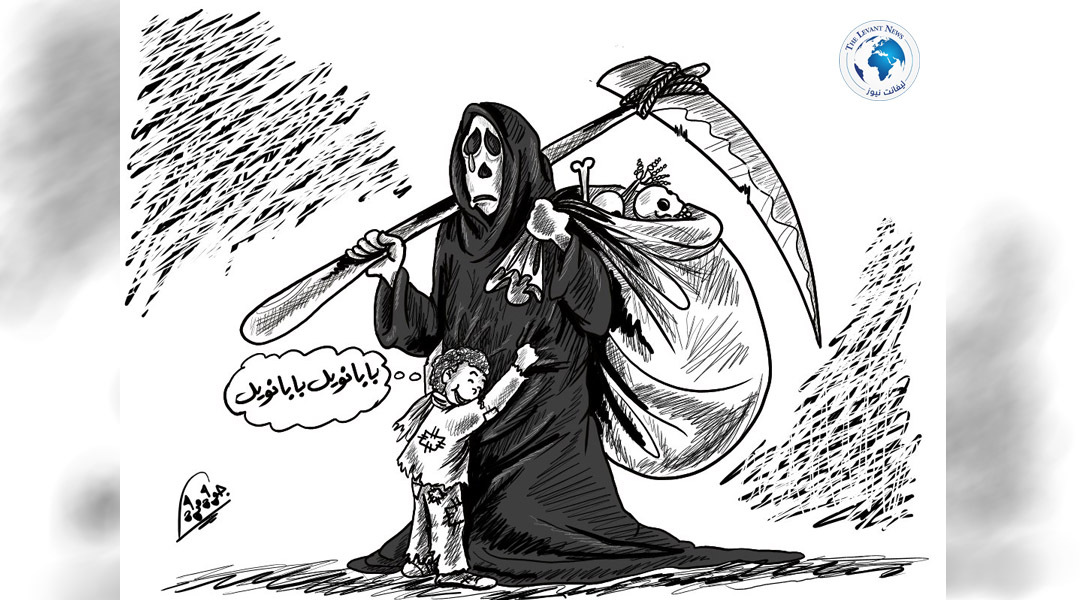-
Washington Escalates Its War Against Iran’s Drone Program

New sanctions target Chinese companies and broader implications... Strangling Iran’s arms supply arteries and confronting the "Empire of Drilling Terror"
In a move considered one of the most aggressive by the United States in months against the Iranian regime, the U.S. Department of Commerce announced on October 2, 2025, the inclusion of 15 Chinese companies in its blacklist, accusing them of participating in supplying Iran and its militias with sensitive electronic units used in manufacturing drones. These drones, which have become the regime's preferred weapon for exporting terrorism, are used from Yemen to Ukraine through Tehran’s regional proxies.
Transcontinental Smuggling Networks
According to the U.S. statement, the condemned companies are divided into two groups: the first includes ten companies believed to have facilitated the transfer of American-made components, which were later found in drones used by the Houthis against civilian targets in Saudi Arabia and Yemen. The second group comprises five companies that, according to accurate intelligence reports, supplied control and communication systems for drones operated by Iran-backed militias in Syria, Iraq, and Lebanon. This designation imposes nearly absolute restrictions on these entities’ access to U.S. technology; under these rules, American suppliers are prohibited from selling or shipping any products without special licenses, which are often impossible to obtain. Through these measures, Washington seeks to choke off Iran’s drone program, which now poses a threat to regional and international security alike.
Iranian Drones... From Yemen to Ukraine
Iranian regime drones are no longer confined to the Middle East. Russia has used them extensively in its war against Ukraine, launching strikes on Ukrainian cities in blatant defiance of international sanctions. These drones have also proliferated through Tehran-backed militias in Iraq, Syria, and Lebanon, used to send threatening messages to the West and its allies. Observers believe that including the Chinese companies is only the first step in a broader campaign; Washington affirms it will pursue all parties or entities involved in supporting Iran’s capabilities. An American official stated: “We will not allow Tehran to build a drone army with Western spare parts. Anyone involved—whether in Beijing, Dubai, or Moscow—will pay the price.”
Iran Facing Increasing Isolation
What is notable about these measures is that the Iranian regime is suffering unprecedented international isolation. After re-imposing UN sanctions and amid rising human rights condemnations over its internal crimes, the regime finds itself cornered from all sides. Reports confirm that Iran’s drone program is no longer just a military project but has become a core tool for regime survival, alongside internal repression and economic plunder. Domestically, public anger is mounting over poverty, unemployment, and the epidemic of executions, which exceeded a thousand cases in 2025 alone, according to Iranian resistance reports. Abroad, the regime tries to leverage arms and drone smuggling to exert pressure and secure political concessions, but these efforts are increasingly exposed to the international community.
Global Day Against the Death Penalty... The Other Face of the Killing Machine
Coinciding with these developments, the Iranian Resistance and the international community commemorated the Global Day Against the Death Penalty, highlighting that the same machine manufacturing drones to kill innocent people abroad is also operating the guillotines at home. While sanctions are imposed on the regime’s arms companies, Tehran continues a silent genocide campaign against protesting youth inside Iran.
On this occasion, Mrs. Maryam Rajavi, the elected President of the National Council of Resistance of Iran, stated:
“The regime that exports killing abroad cannot survive without executions at home… Every drone it sends is an extension of the noose around the necks of the innocent inside Iran.” She added that the true solution is not just a series of economic sanctions but the overthrow of this entire regime and the establishment of a democratic, secular republic based on respect for human rights and peace.
Washington and the Shift in the Equation
Washington recognizes that its confrontation with Iran is no longer solely about nuclear or trade issues but a struggle over the very concept of stability. As pressure intensifies on Tehran, it tends to escalate and resort to blackmail through its proxies. However, the international community’s will to hold Iran accountable is also growing stronger. Diplomatic circles in Washington indicate that the Biden administration is now working on broader coordination with the European Union to establish a “unified sanctions network on Iran’s drone program,” linking it to human rights and executions inside Iran.
Thus, the drone issue is transforming from a security matter into a comprehensive political and humanitarian dossier, reflecting a growing conviction that the Iranian regime cannot be separated from terrorism—inside its borders and beyond.
In conclusion, it is clear that the policy of “dual strangulation”—targeting the regime’s funding sources, weapons, and exposing its internal crimes—is the only viable path to deterring Tehran. As the Iranian Resistance affirms, every international step deepening this regime’s isolation is a move toward the day when guillotines are replaced with flares.
Abdul Razzaq Al-Zarzour
You May Also Like
Popular Posts
Caricature
opinion
Report
ads
Newsletter
Subscribe to our mailing list to get the new updates!




















